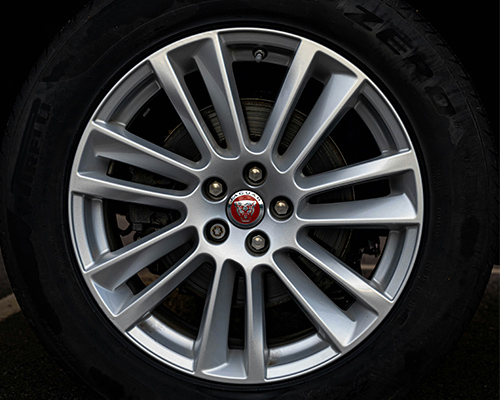Brake Disc vs. Drum Brakes: Which Is Right for You?
11th April 2024
When it comes to brakes, there are two main types that dominate the industry: disc brakes and drum brakes. Each type has its own set of advantages and disadvantages, making the choice between them not just a matter of preference but also of functionality, performance, and safety. In this article, we will look into the specifics of both brake types, comparing features, benefits, and ideal use scenarios to help you determine which braking system is right for you.
Understanding the Basics
Before we compare, let's establish a basic understanding of how each braking system works.
Disc Brakes
Disc brakes consist of a disc-shaped metal rotor, a caliper, and brake pads. When you press the brake pedal, hydraulic fluid is pushed through the brake lines into the caliper, which then squeezes the brake pads against the rotor. This friction slows down the rotor and, consequently, the wheel, bringing your vehicle to a stop.
Drum Brakes
Drum brakes, on the other hand, feature a drum and brake shoes. The drum is a cylindrical bowl that rotates with the wheel. Inside the drum, there are brake shoes that expand outwards when you press the brake pedal, pressing against the inner surface of the drum to create friction and slow down the vehicle.
Performance and Efficiency

One of the key differences between disc and drum brakes lies in their performance and efficiency.
Disc Brakes: Known for their superior performance, disc brakes provide better heat dissipation, which is crucial during prolonged braking or in situations that require sudden stops. This characteristic makes disc brakes more effective in preventing brake fade, a condition where brakes lose effectiveness due to overheating. Moreover, disc brakes offer improved stopping power and shorter stopping distances compared to drum brakes.
Drum Brakes: While drum brakes might not excel in performance compared to disc brakes, they are still effective for everyday driving conditions. Drum brakes are more prone to brake fade under extreme conditions due to poorer heat dissipation. However, they do have the advantage of being more cost-effective, both in terms of initial setup and maintenance.
Maintenance and Durability
Maintenance and durability are important considerations when choosing between disc and drum brakes.
Disc Brakes: Generally, require more frequent maintenance than drum brakes, mainly because the pads wear down faster than the brake shoes in drum brakes. However, disc brakes are easier to inspect and replace, which can be an advantage for vehicle owners looking to save time and labour costs.
Drum Brakes: Tend to last longer before needing service, mainly due to their enclosed design, which protects the braking components from dust and debris. This design also makes drum brakes more difficult and time-consuming to service when maintenance is required.
Cost Considerations
Cost is often the main factor for many vehicle owners, and there are differences in the cost implications of disc and drum brakes.
Disc Brakes: Typically, more expensive to manufacture and install than drum brakes. This is due to the complexity of the components involved and the materials used. Also, the more frequent maintenance requirements can lead to higher long-term costs.
Drum Brakes: Are generally cheaper to produce and install, making them a cost-effective option for the rear brakes of many vehicles. Their longer service intervals can also contribute to lower maintenance costs over the life of the vehicle.
Ideal Use Scenarios
Disc Brakes: Ideal for high-performance vehicles, heavy-duty applications, and situations requiring optimal stopping power and heat dissipation. They are commonly used on the front wheels of most vehicles, where the majority of braking force is needed, and increasingly on all four wheels for higher-end or performance-focused models.
Drum Brakes: Well-suited for lighter vehicles and rear-brake applications where less braking force is required. They are a cost-effective solution for small to medium-sized vehicles and are commonly found in the rear brake setup of many cars, complementing front disc brakes for effective overall braking.
Conclusion

The choice between disc brakes and drum brakes depends on several factors, including your vehicle type, driving conditions, performance requirements, and budget. Disc brakes offer superior stopping power and heat dissipation, making them ideal for performance-oriented vehicles and demanding driving conditions. Drum brakes, with their cost-effectiveness and durability, are a practical choice for everyday vehicles and less intensive braking demands.
Key Takeaways for Choosing the Right Brake System
Assess Your Driving Needs: Consider the type of driving you do most often. High-speed or performance driving, heavy towing, and frequent mountainous journeys demand the superior performance of disc brakes. For general commuting and light-duty use, drum brakes can suffice.
Long-Term Costs: While drum brakes may have lower initial costs, disc brakes might offer better value in the long term due to their performance and efficiency, especially in demanding conditions that would otherwise accelerate wear on drum brakes.
Safety First: Regardless of cost considerations, safety should always be your priority. The superior stopping power of disc brakes can make a significant difference in emergency situations, potentially outweighing any cost savings from choosing drum brakes.
Ask a Professional: If you're uncertain about the best option for your vehicle, consulting with a professional mechanic or automotive specialist can provide insights tailored to your specific vehicle and driving patterns.
Stay Informed: Automotive technology is continually evolving, with advances in materials and design improving the performance, efficiency, and cost of both disc and drum brake systems. Keeping abreast of these developments can help you make more educated decisions regarding your vehicle's braking system in the future.
In conclusion, the debate between disc brakes and drum brakes is not about which system is categorically better, but rather which is more suitable for your specific needs and circumstances. By understanding the strengths and limitations of each type, you can make an informed decision that enhances your driving safety, performance, and overall satisfaction.







